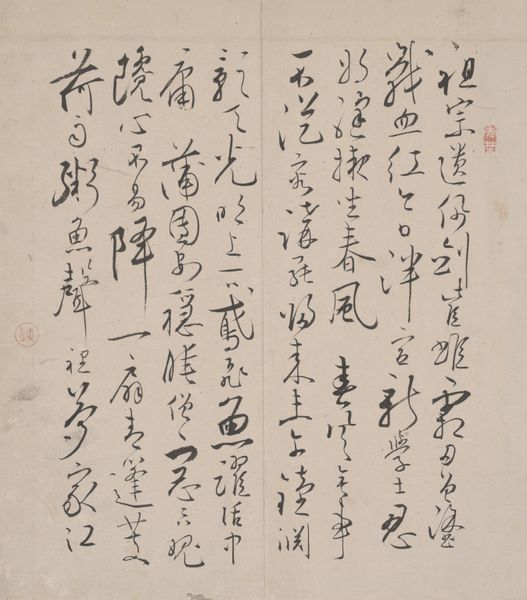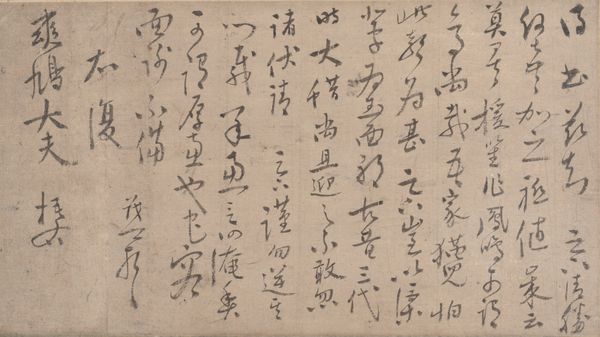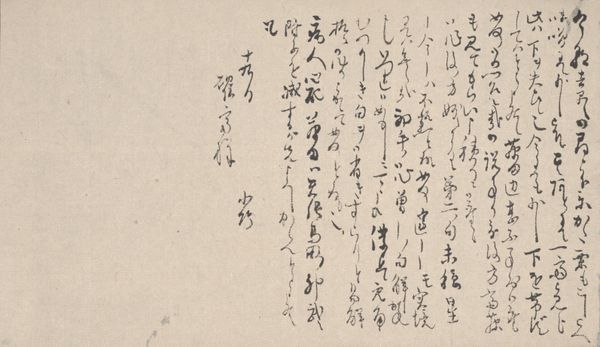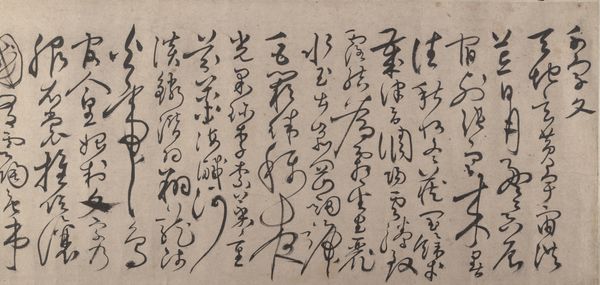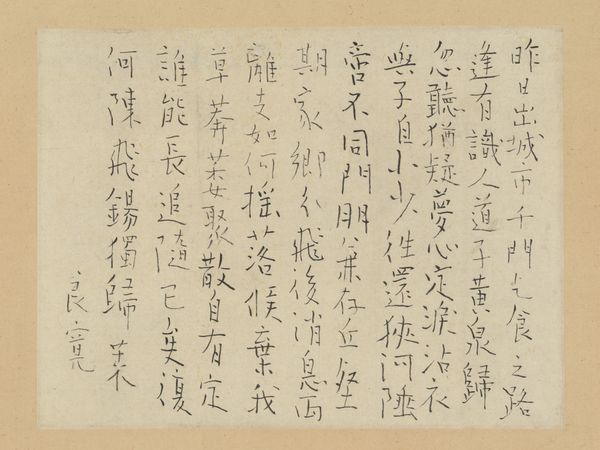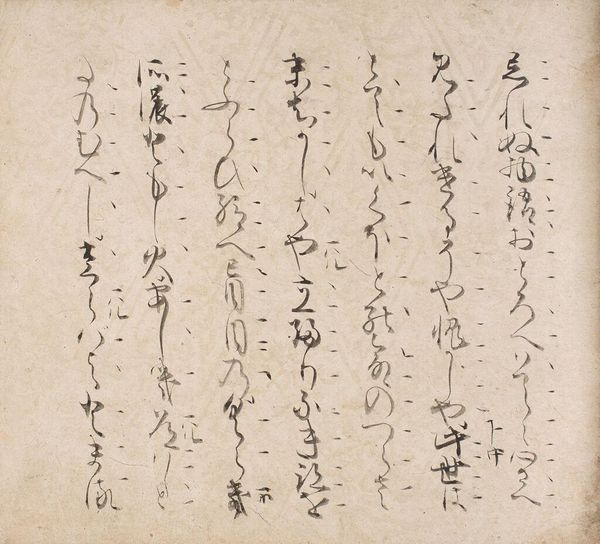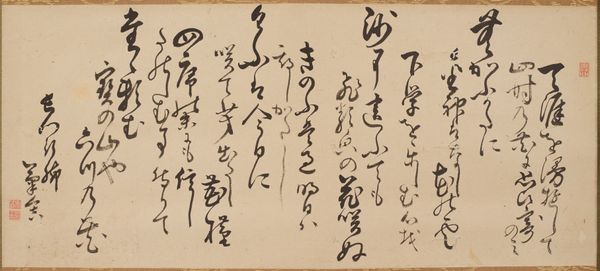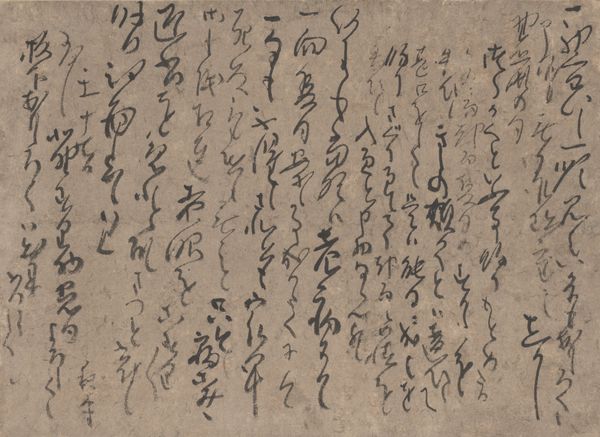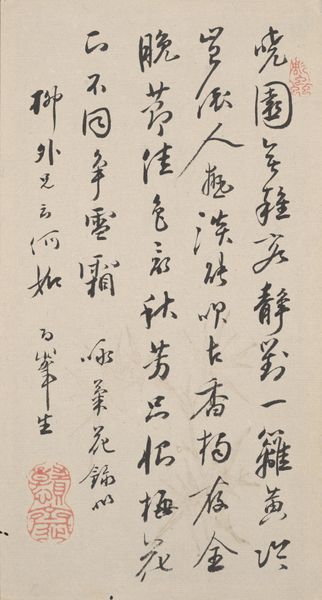
paper, ink
#
asian-art
#
paper
#
ink
#
calligraphy
Dimensions: 12 1/16 × 10 1/2 in. (30.64 × 26.67 cm)
Copyright: Public Domain
Curator: What an interesting piece. The museum has it cataloged as simply "Poem," created around the mid-19th century by Kōno Tettō. It's ink on paper. Editor: It feels… impenetrable at first glance. I'm confronted by a beautiful density. Dark ink strokes against the pale paper create a dramatic visual rhythm. I’m curious; how are pieces like this presented and interpreted within the broader socio-political context of 19th-century Japan? Curator: Given that it is calligraphy, this poem offers glimpses into the personal and cultural values that resonated with the artist and potentially the audiences of the time. We know calligraphy has always been more than mere writing. It is considered a high art form deeply interwoven with spirituality and personal expression. The specific symbols used carry cultural memory. Do any stand out to you? Editor: Well, the cascading nature evokes flowing water or perhaps even tears, visually speaking. Is that reading too much into it? From an art historical perspective, how might prevailing artistic theories about nature, emotion, or personal expression at the time impact the choices in writing and composition? Also, I would wonder what it reveals of patronage and artistic institutions in that era, since that would allow artists like Tettō to thrive. Curator: Not at all, these associations align perfectly with traditional interpretations of calligraphy. The way the ink bleeds and the varying pressure points are all intentional—meant to convey mood and inner feeling. And yes, patronage definitely would play a part; successful calligraphers often operated within elite circles, supported by wealthy individuals or institutions, and served as cultural gatekeepers to what imagery was shared. It highlights that, beyond the artistic skill, their work was tied into social power dynamics and ideological currents. Editor: That is compelling, really gives one so much more to ponder than just a first reading of the piece's sheer aesthetic. Curator: Absolutely. When you reflect upon this calligraphic poem, you find it acts as a visual echo through the ages, continuing to connect us with different ways of expressing ourselves and solidifying our culture. Editor: Yes, I agree. I now see how this poem is much more than what seems like some abstract ink squiggles; the social and cultural forces shaped both its creation and its long history. Thank you.
Comments
No comments
Be the first to comment and join the conversation on the ultimate creative platform.
